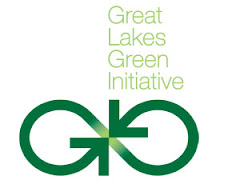
Last Saturday night a group of us gathered to hear about a week-long seminar that our friend M.C. had taken on the topic of permaculture. I had certainly heard about it before, but the sum total of my recollections had to do with something about not digging in the soil and disturbing the life down there. Apparently there's more to it than that. M.C. spent about an hour summarizing the important points she had learned and recommended a few books on the subject. We learned that permaculture refers not just to a method of gardening, but to a whole life approach. I had been correct that it focused on a foraging-type system of agriculture (aka - not disturbing the soil), but learned that the system is quite detailed and all-encompassing. I took no notes, and you certainly don't want to rely on my memory, so I Googled 'permaculture' and learned quite a lot more.
'Permanent agriculture' as a term has actually been around since 1911, but the modern system of 'permaculture' started in the 1970's by Australians Bill Mollison and David Holmgren. Mollison felt that the industrial revolution had destroyed the earth's ecosystems, and developed a core set of design principles that individuals could use to design their own environments and develop self-sufficiency. It has developed as a concept beyond agriculture, moving into the arena of human culture.
As a system design tool, permaculture suggests that you:
* look at a whole system or problem
* observe how the parts relate
* design a remedy from well-known patterns of working systems
* find connections between parts.
An example of a permaculture system might start with the sun providing energy for a plant to grow. The plant provides nectar for bees or can feed wildlife. The bees or wildlife help disperse seeds that grow into tall trees that provide shelter for other living things. The bees can provide food for the birds. The leaves will fall and rot, providing food for small insects and fungus. So it is all one system, each part integral for the health of the other.

Permaculture is far more complex than this, but this gives you a little introduction to the philosophy. We unwittingly began something like this a number of years ago when we dug a dry creek in the middle of our back yard to carry water down to a rain garden, and turned the northernmost section of the yard into what we are calling a woodlands. We planted trees and native shrubs, along with a few dozen native perennials. We figured this was less grass to mow and fertilize, and it would provide a deeper root system for our yard, ultimately aiding in its health. When I read about permaculture, it looks like this is the road we have been heading down. If so, I'm interested in reading more about this.

No comments:
Post a Comment